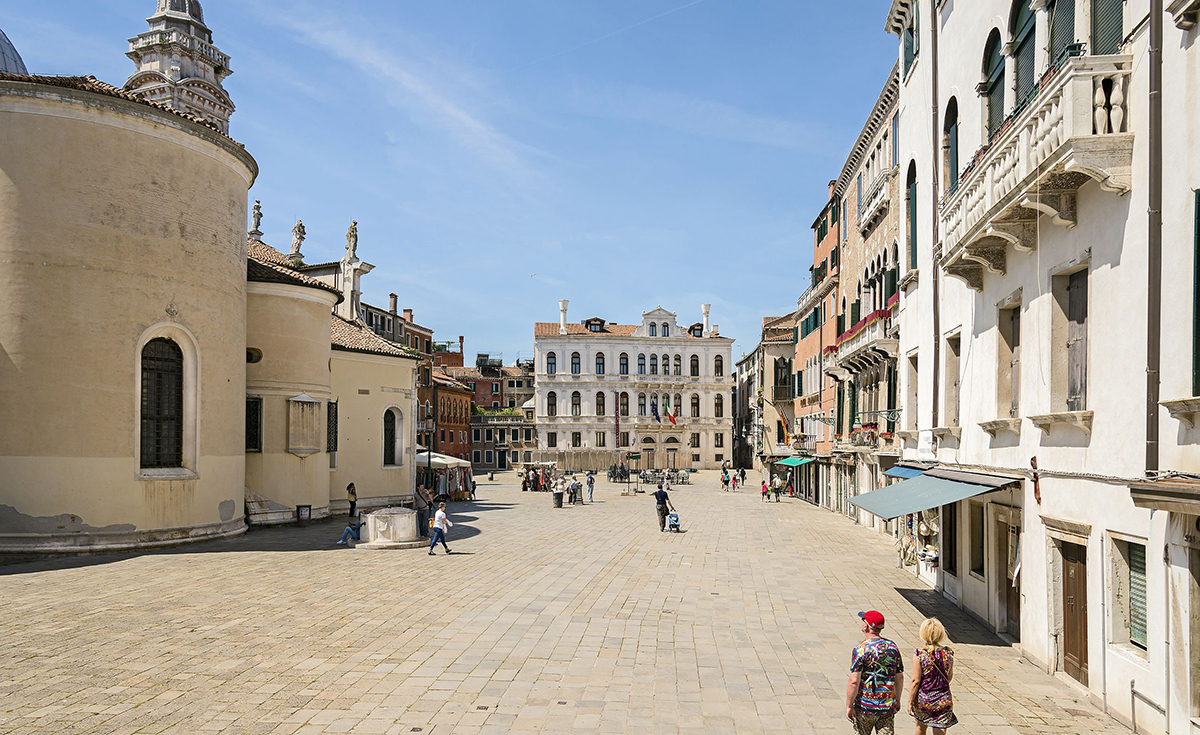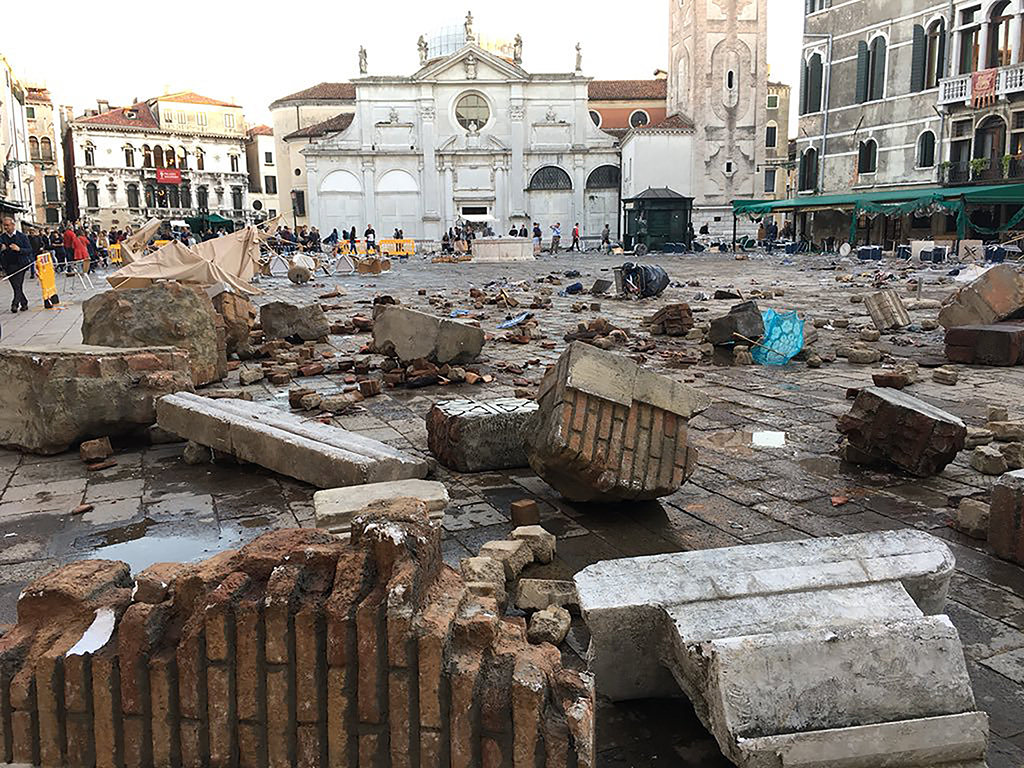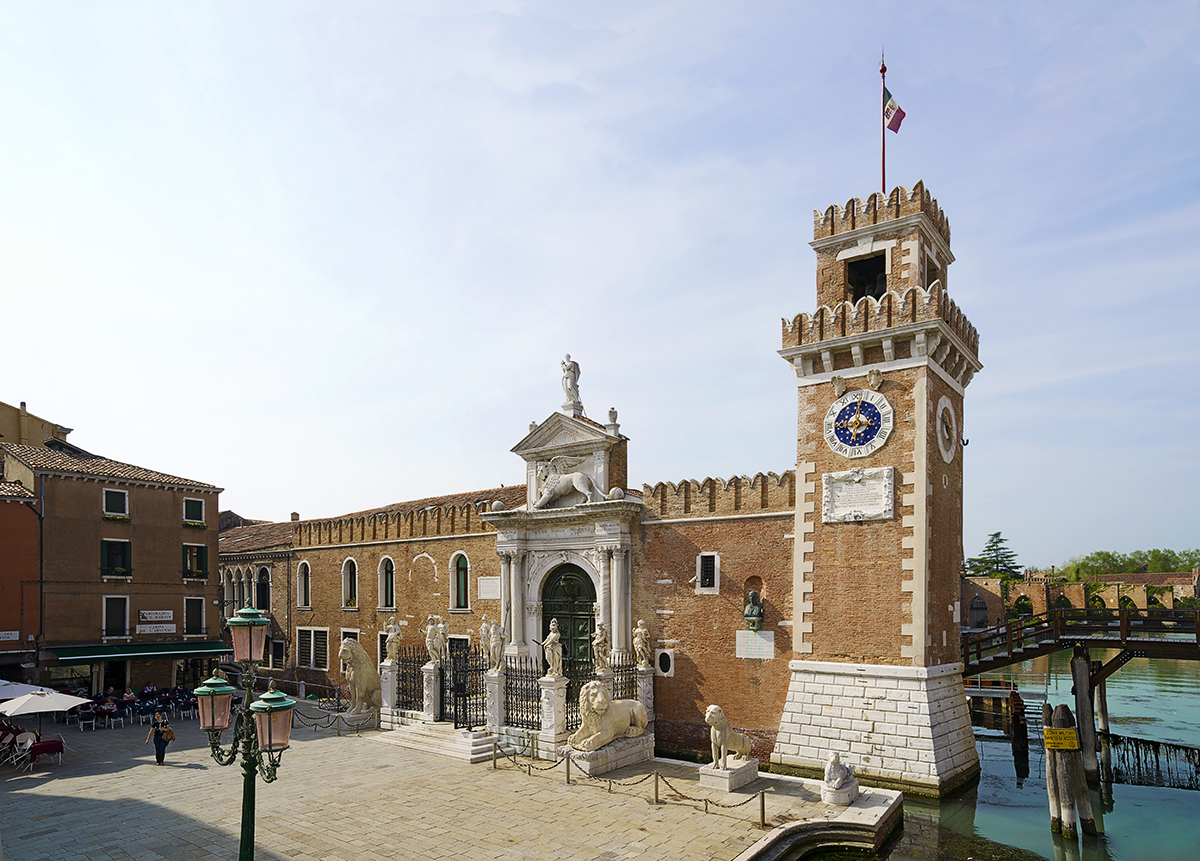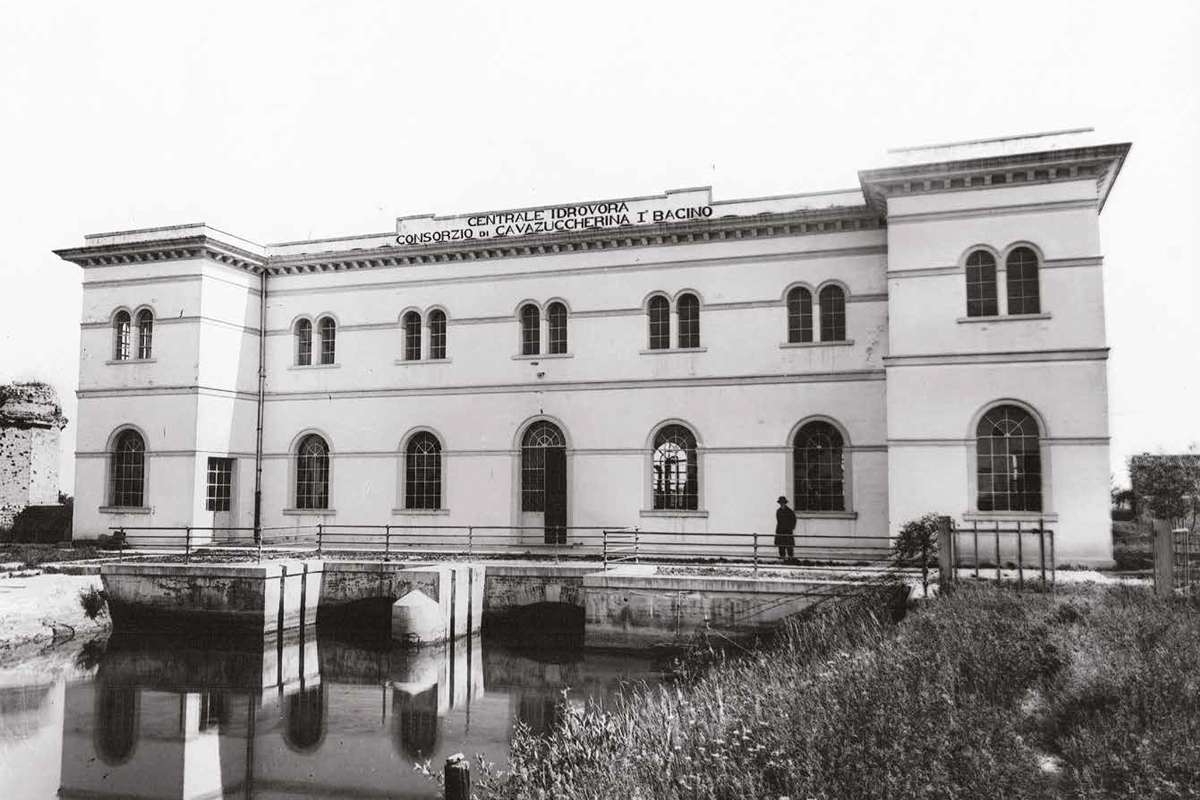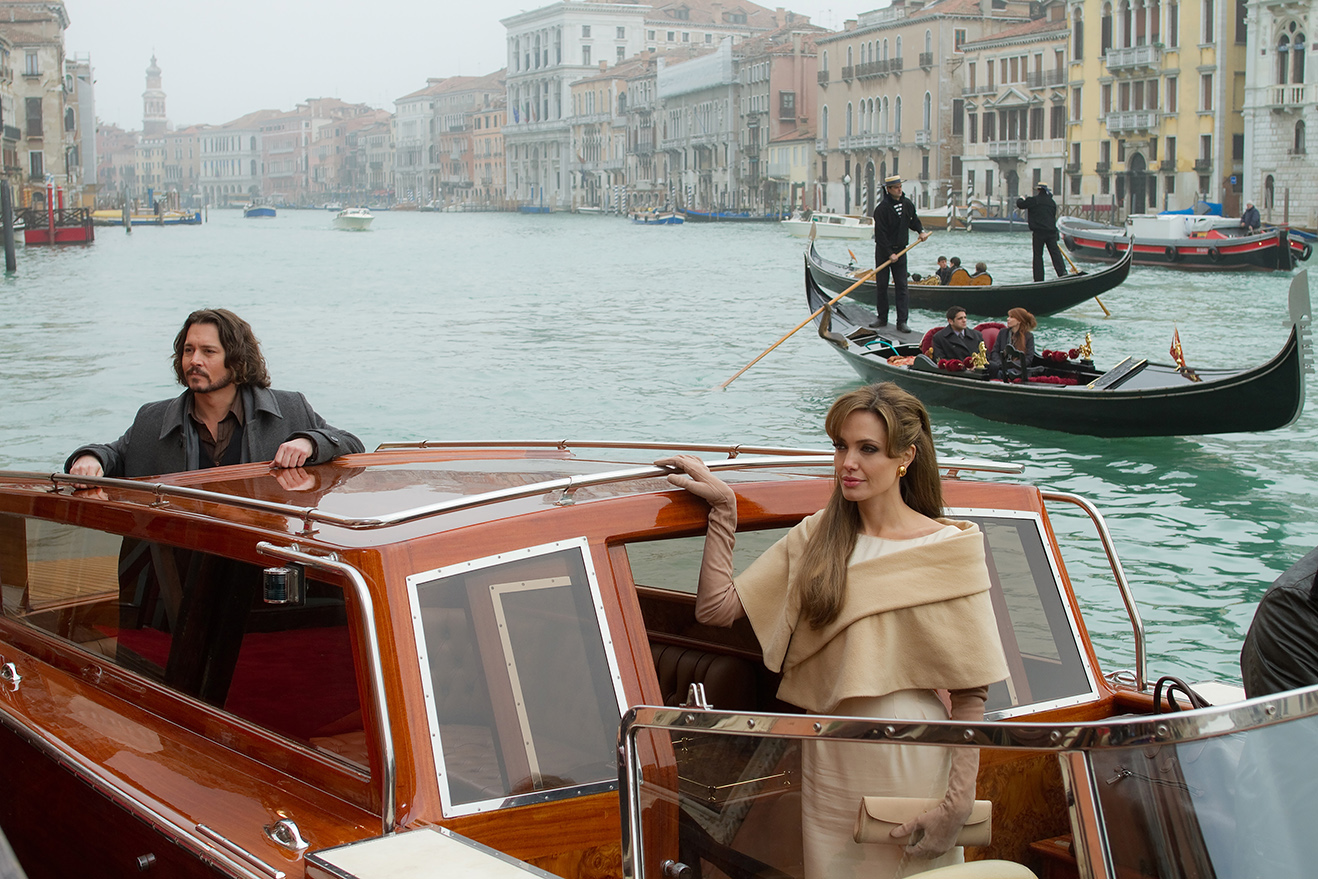
A city between reality and films
“You are walking over an endless forest upside down, you are walking over an incredible inverted forest”. With these words the poet and writer Tiziano Scarpa speaks of Venice, a city placed on wooden stilts that coexists with the high tides. Not only that, but Venice is also a work of art where the ancient blends with the contemporary, in which the classic blends with the Gothic and with the latest fashions of the moment.
From above, the city takes the form of a fish divided in two by the Grand Canal and, ironically, the Ponte della Libertà, a road and railway artery that connects the historic centre to the mainland, takes on the appearance of a fishing line that has captured its prey. From this visual element one notices the fact that we are not admiring just any place. Do not miss the colourful sunsets in which the Sun disappears “diving” into the lagoon observed from one of the countless elevated points of the city … Do you love walks? In the historic city centre you can only move on foot or by boat: great for those who like to move in an alternative way.
It is a city of precarious balance between the natural lagoon environment and artificial constructions in which western culture merge with eastern ones. This is certainly not new: since the dawn (25 March 421 AD according to legend) the Serenissima was born as an offshoot of the Byzantine East in an area close to Western Europe. In other words, Venice has been a crossroads of cultures since its origins, crossing between east and west and with the current globalisation this element of multiculturalism emerges once again.
Over the centuries the Serenissima has been the scene of all kinds of events: adventurous, dramatic, amorous, scandalous … in short, emotions have not been lacking throughout history, let alone those that continue to happen!
It is not easy to transport the emotions, the history, the cultural fervour of such a place without visiting it in person … but films exists! Technology becomes a formidable tool in the hands of directors, who give life to their amazing scripts that are transported to the big screen. This is how fiction joins reality in a setting that has centuries of events in it and that never seems a fake location. Venice is a timeless setting as it refers to a past glorious past, but at the same time you can see the signs of a necessary modernisation that is not always well hidden – and sometimes disharmonious – with the surrounding ancient buildings.
We should not be surprised if this city was chosen as a set for (approximately) 700 cinematographic works of various kinds. Venice has never appeared badly even if it hosts comedies, tragedies, love or adventure films, news or fantasy films. Is it a coincidence? We think not because Venice is truly one of a kind!
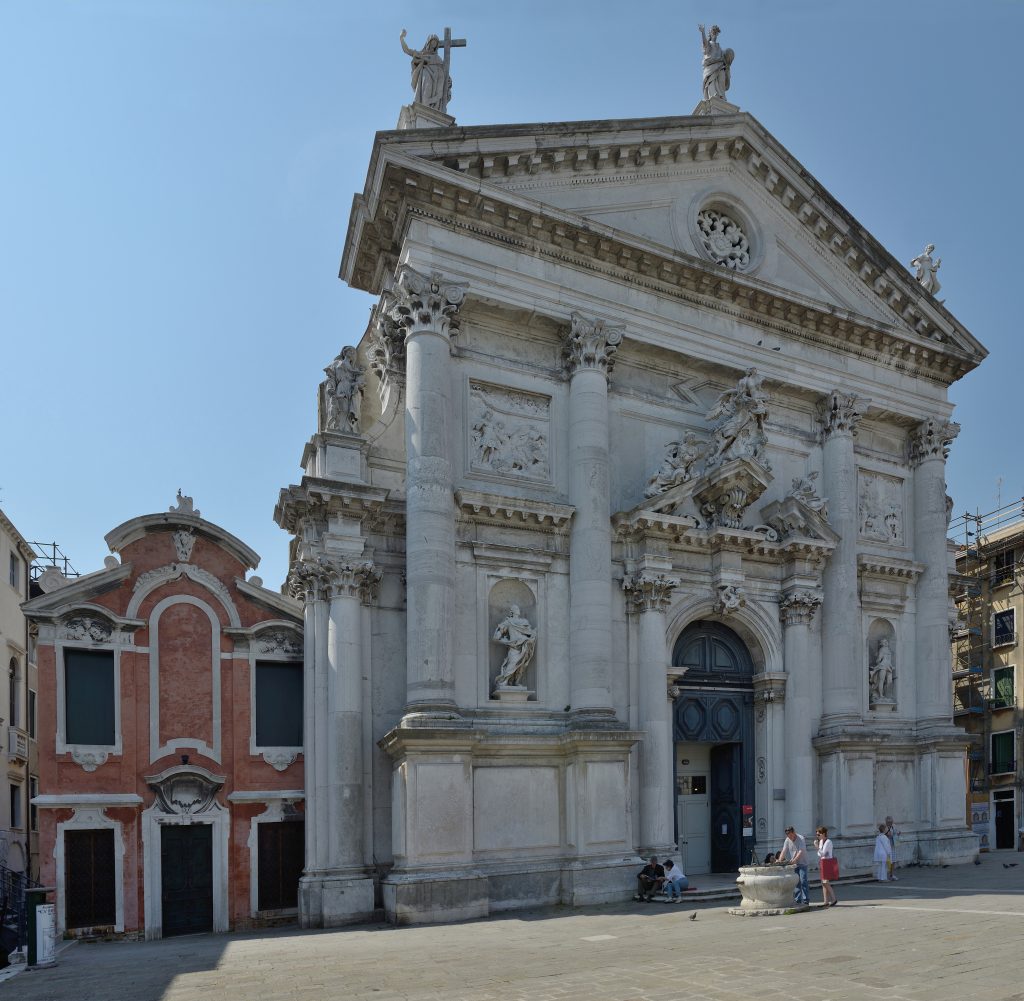
Church of the month
Church of “San Stae” or “Sant’Eustachio”
Its facade facing the Grand Canal was the backdrop for the final scene of the film “In Venice … a shocking red December” (1973). It seems that the church of San Stae has very ancient origins, at least dating back to the 12th century, and the initial construction had typically Byzantine elements (with 5 naves!) which made it a very different structure from the current one. Razed to the ground in the 17th century, the entire structure was rebuilt by the architect Giovanni Grassi. The Baroque yet Palladian-inspired facade, designed in 1709 by Domenico Rossi, was sculpted by Giuseppe Torretto, Antonio Tarsia, Pietro Baratta and Antonio Corradini. The interior consists of a single nave with three chapels on each side; in the centre is the tombstone of the family of the Doge Alvise II Mocenigo (110th Doge of the Serenissima).
Santa Croce, Campo San Stae
Open by appointment from Monday to Saturday, from 1.45pm to 4.30pm
Telephone 041 2750462
Between calli and steps
Campo Santa Maria Formosa
It owes its name to the great sacred building dedicated to Santa Maria Formosa which is located in the south-eastern part, it is one of the largest campo of the city with its eleven bridges and nine streets, there are many buildings of historical and architectural importance and recently it was also the movie set for the filming of the movie “Spiderman: Far from home”. A water monster with the appearance of an anomalous wave hits Venice, whilst Spider-Man and Mysterio super-villain try to fight against it. The visual impact for those who manage to pass through Campo Santa Maria Formosa, in the first days of October last year, eluding security, was noteworthy: the field was unrecognisable, post-war, invaded by debris, destroyed objects, fake scattered ruins everywhere and dirt. Later the film set was moved to different parts of the city, from Piazza San Marco, to San Basilio, from the Grand Canal to the Fondaco dei Tedeschi.
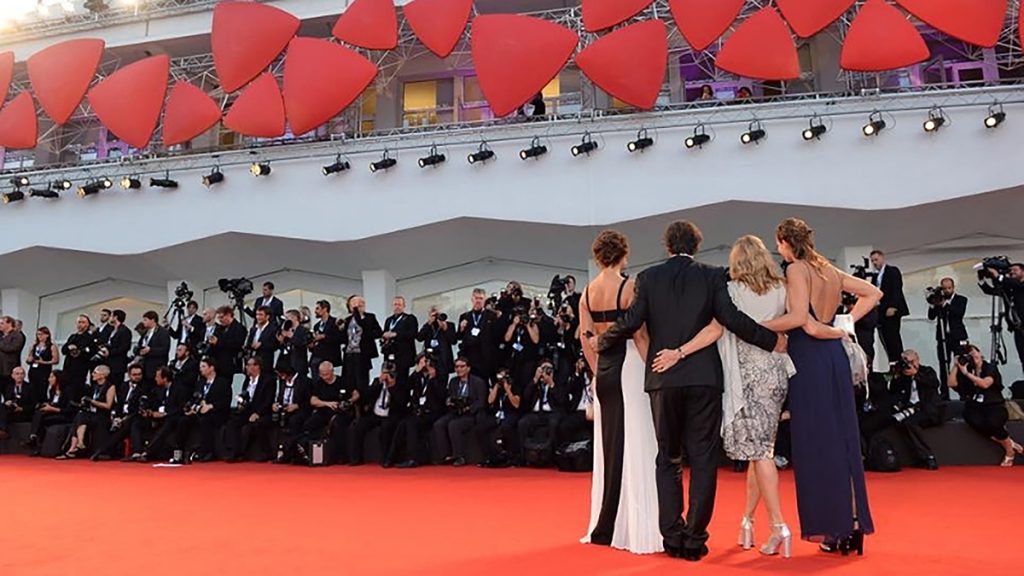
Appointment with art
The Venice Film Festival
Everything is ready at the Venice Lido for the 76th edition of the Venice International Film Festival, scheduled from Wednesday 28th August to Saturday 7th September. The event, organised by the Venice Biennale, is directed by Alberto Barbera and aims to promote knowledge and talk about international cinema in all its forms of art and entertainment, in a spirit of freedom and dialogue. On the red carpet, actors, actresses and directors from all over the world are ready for the Festival. The godmother of the festival will be Alessandra Mastronardi. The opening film that inaugurates the competition will be “La Vérité by Kore-eda Hirokazu, starring Catherine Deneuve, Juliette Binoche, Ethan Hawke. The thriller “The Burnt Orange Heresy”, directed by Giuseppe Capotondi, with Claes Bang, Elizabeth Debicki, Donald Sutherland and Mick Jagger, is to be the closing film, which is out of competition. The Golden Lion for the career of the 76th edition will be given to the English actress Julie Andrews.
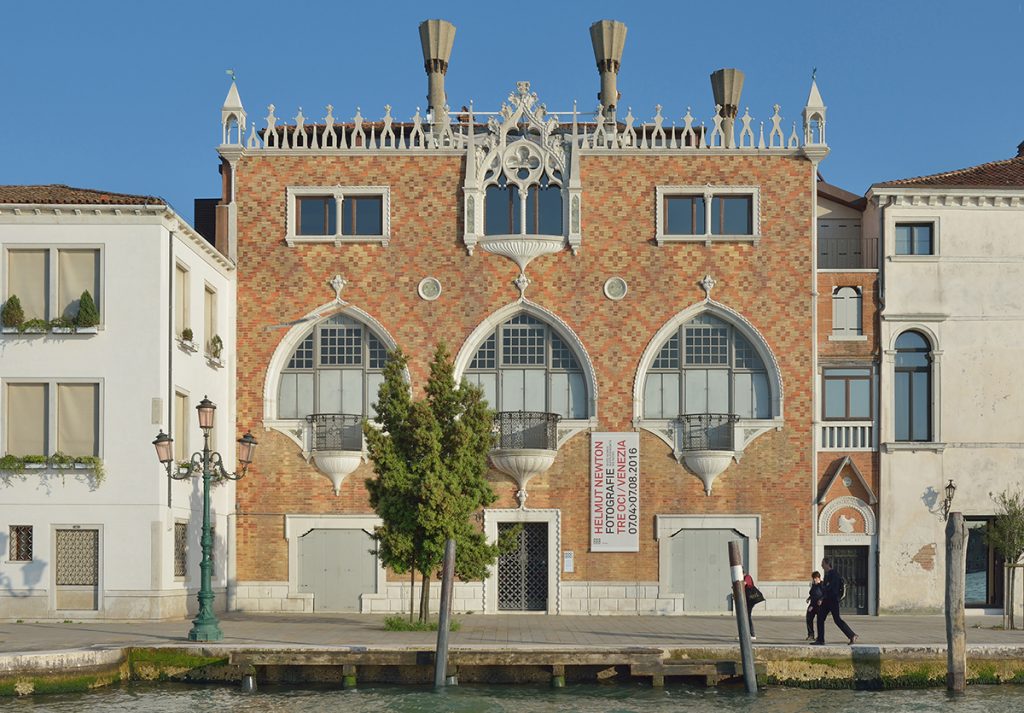
Historical Buildings
Casa dei Tre Oci, Giudecca Island
On the island of Giudecca, in the centre of the San Marco basin, is the Casa dei Tre Oci, a building designed by the Emilian painter Mario De Maria and built on three floors, where the importance of the noble floor is clearly seen, with three large windows called oci (Venetian dialect for eyes), which were required by the artist as a symbol of the three members of his family – himself, his wife Emilia Voight and his son Astolfo. It was built in 1913 and became the family’s new Venetian residence as well as the artist’s home-studio. After his death, several characters connected to the world of art lived there including Renzo Piano, the painter Giorgio Morandi, Dario Fo and the artist Lucio Fontana. It has always been a place of artistic and cultural importance, and became a film set in 1970 for the film Anonimo Veneziano, by Enrico Maria Salerno: the star Enrico accompanies his wife Valeria right up to the terrace of the house, from where you can see the whole city.
4 Must of Venice
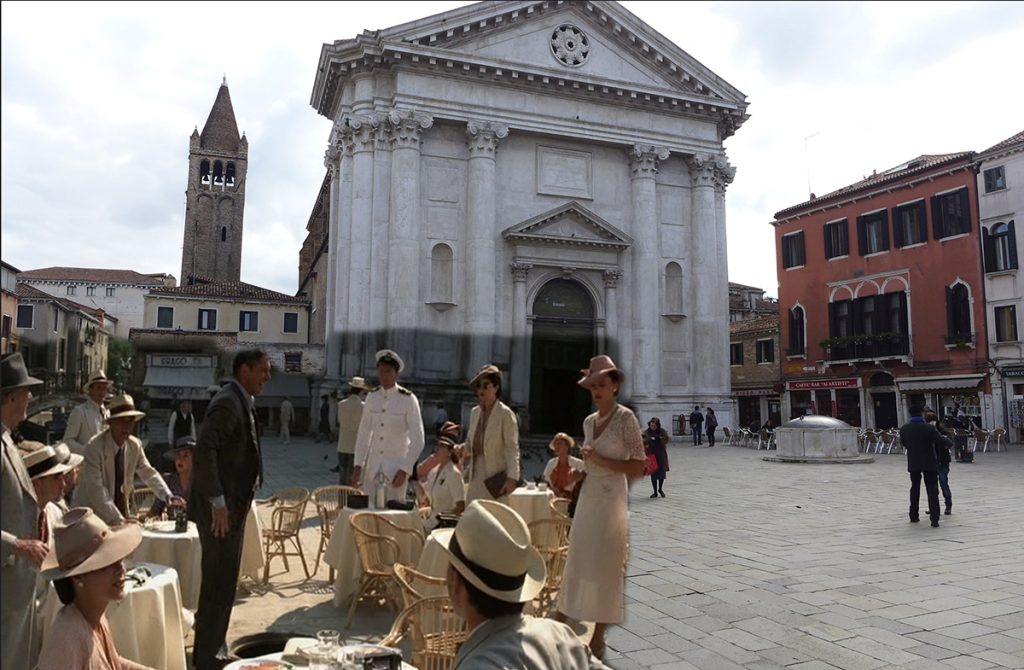
Must-see
Campo San Barnaba
Located in the Dorsoduro district, Campo San Barnaba has often been used as a set for filming. For example, in “Tempo d’estate” (1955) by David Lean, starring Katharine Hepburn and Rossano Brazzi, the star falls into the water in the adjacent canal in one of the most famous scenes in the film. In “Indiana Jones and the Last Crusade” (1989), with Harrison Ford, the main character emerges from a manhole after exploring the (imaginary) interiors of the Church of San Barnaba.
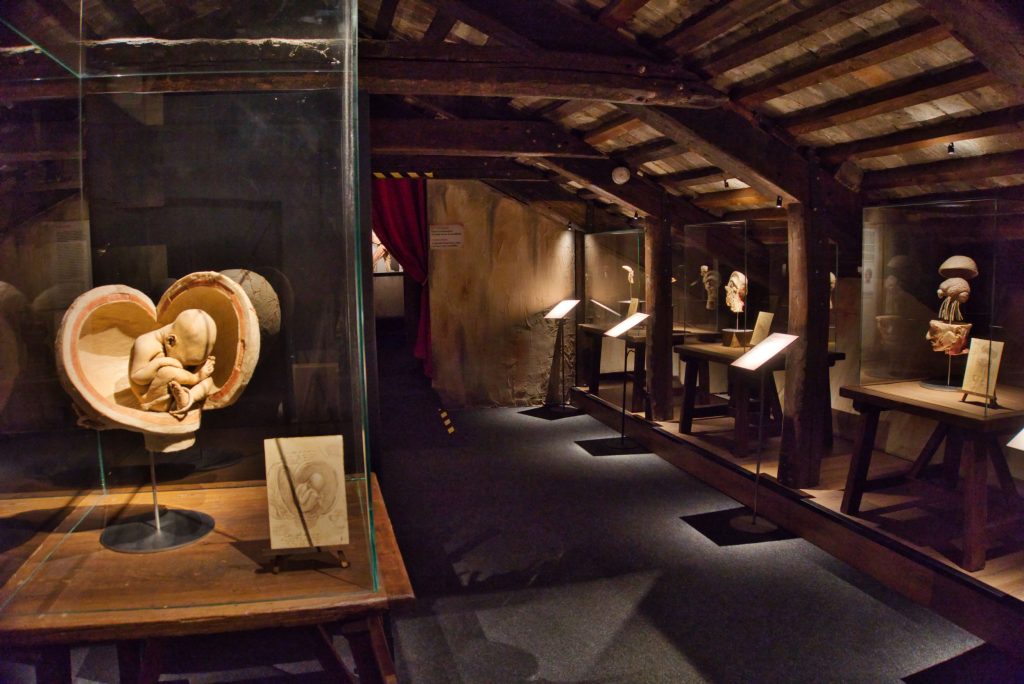
Must-do
“Authentic Human Bodies”: at Palazzo Zaguri the exhibition on Leonardo da Vinci
An exhibition dedicated to Leonardo Da Vinci and human anatomy. Palazzo Zaguri hosts, until 30th September 2019, the exhibition entitled “Authentic Human Bodies”, which highlights the famous drawings of the Florentine artist through human finds. Visitors can also admire the famous “Self-portrait” with the method of cloning. Finally the Russian artist Vasily Klyukin shows the work “Genius Library”, that is the sculpture in mirrored copper plates that represents the great master.
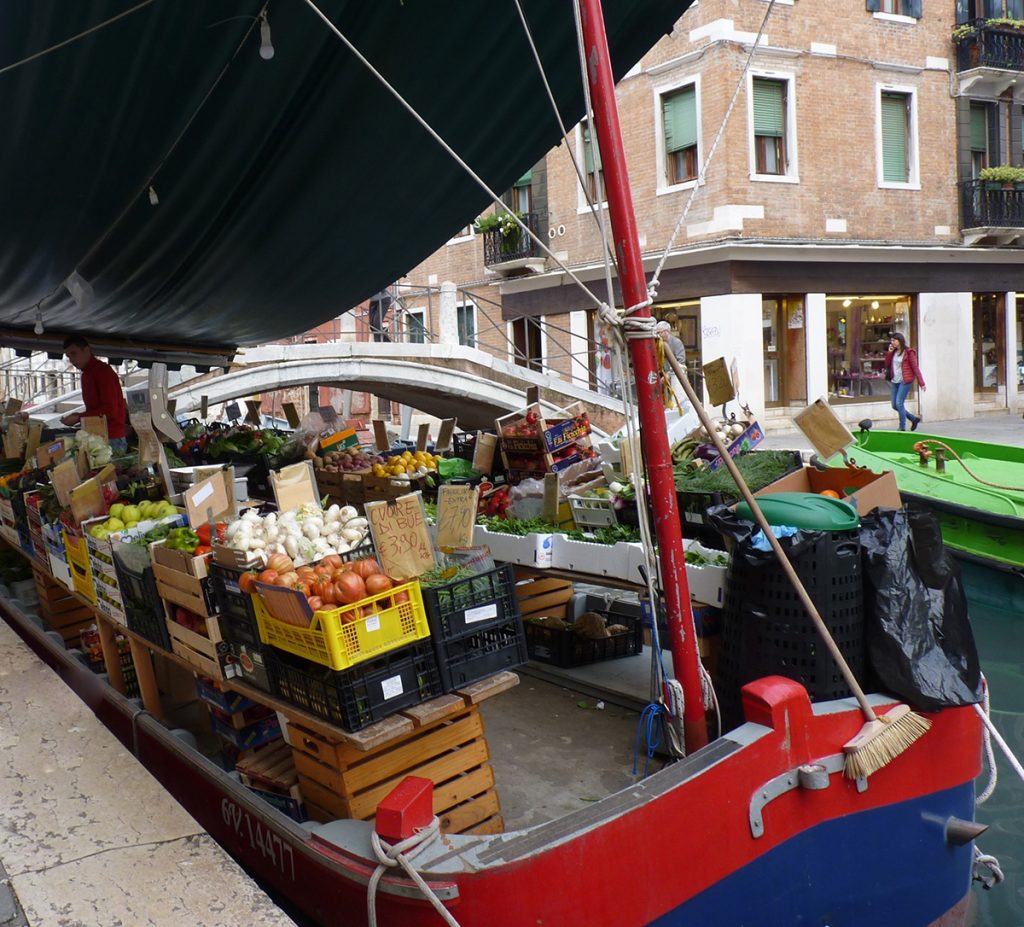
Must-have
Near Campo San Barnaba at the foot of the Ponte dei Pugni, there is a floating fruit and vegetable shop. The Barca del Fruttiverlo, simply called so by the Venetians, has been here for about seventy years, it is unique in Venice, and it is the same one on which one of the motorboats were launched at full speed, in the famous scene of the chase of The Italian Job, film from 2003, directed by F. Gary Gray.
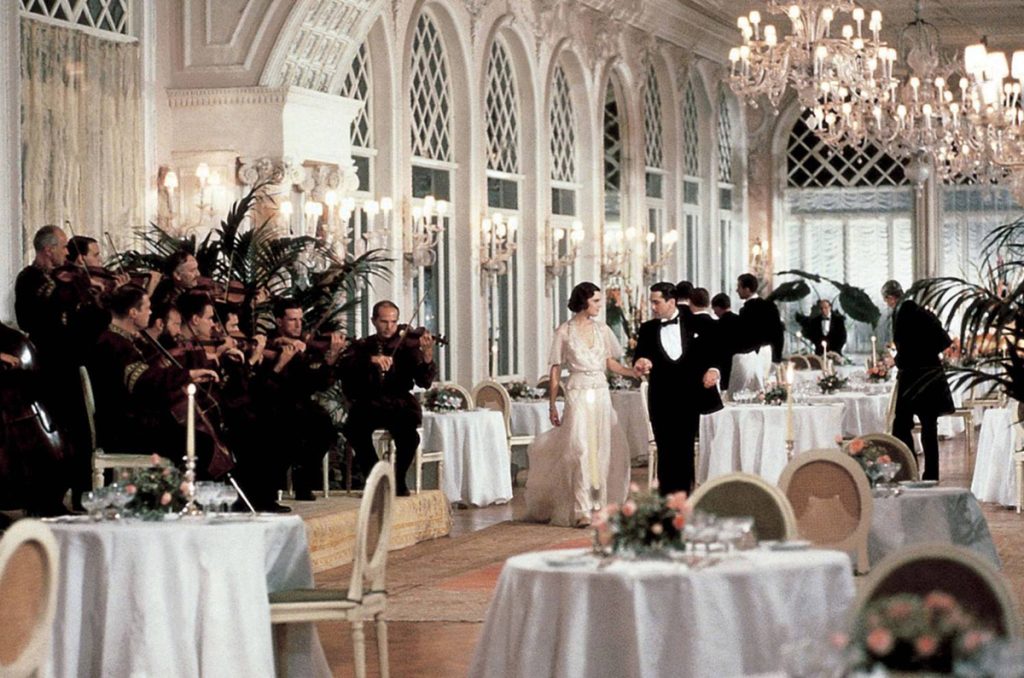
Must-eat
The Hotel Excelsior Venice Lido Resort was built in 1907. The view of the Adriatic Sea of the Tropicana Terrace and a creative cuisine curated by Michelin starred chef Lionello Cera will gift you unforgettable moments. It is on this terrace that the first Venice Film Festival takes place in 1932 and, in 1984, Sergio Leone shoots an unforgettable scene from “Once upon a time in America”: Noodles and Deborah go to the restaurant “in Long Island” which, in reality, is the very elegant Sala degli Stucchi of this hotel.



